Vegan for the environment.
Animal agriculture is the most destructive industry on the planet.
Livestock farming causes more environmental damage than mining, driving an SUV, rail or air transport.
Animal agriculture is the leading cause of species extinction, ocean dead zones, water pollution, and habitat destruction.
A World Watch report showed that 51% of greenhouse gas emissions worldwide can be attributed to animal agriculture, land clearing for livestock, by-products and animal transportation. [1]
Animal agriculture’s destructive environmental impacts include animal gas emissions, nitrous oxide from animal waste, deforestation for farmland and stock feed and subsequent species extinction. Livestock covers 41% of the planet’s land [2] and has resulted in devastating habitat destruction and consequent extinction of hundreds of species.
47.9% of New Zealand’s greenhouse gas emissions are from agriculture. This is largely due to methane from cows, which is 28 times worse for global warming than carbon dioxide:
Animal agriculture causes pollution
Climate change is not the only environmental disaster caused by livestock farming.
Up to $10.7 billion is needed to remove nitrates (created by dairy farming) from drinking water, $3.1 billion to counteract greenhouse gas emissions and $611 million to respond to soil compaction, a serious environmental issue which inhibits infiltration, plant growth and thus productivity.
Over 75% of soils under dairying are badly affected by compaction, and river quality New Zealand-wide has declined tragically, significantly worsened by intensive farming. 29% more nitrogen was leached into soils from agriculture in 2012 than 1990, mainly due to more dairy cattle and nitrogen fertiliser.
Excess nitrogen ends up in groundwater, rivers and lakes, which causes growth of harmful periphyton that restricts river flows, blocks irrigation and water supply intakes, and suffocates riverbed habitats. Nearly 50% of rivers in New Zealand are significantly degraded.
The Manawatu river is one of the most polluted in the world. Most of the Waikato’s rivers and streams are unsafe to swim in, with approximately 90% of pollution being caused by rural runoff from dairy farms and other pasture. National Minister Nick Smith considers water pollution to be an environmental issue second only to climate change in importance.
The 16,000 pigs in an intensive operation cause as much effluent as a city of 23,000 people, and this is largely untreated. Reids piggery in Carterton (owners of the Premier Bacon brand) were convicted for dumping what essentially amounted to raw sewage into waterways.
We are in the midst of the largest mass extinction in 65 million years. [3]
Animal agriculture is responsible for 91% of Amazon destruction and is the cause of 80% of all globally threatened bird and mammal species, largely due to deforestation for livestock feed or grazing.
Habitat destruction is the leading cause of extinction especially in a recognised “biodiversity hotspot” like New Zealand. Thanks to our insatiable demand for animal flesh, the once diverse lowland forest that covered the Hauraki Plains, the Horowhenua and other places, have become a sea of pasture, dotted with livestock, as far as the eye can see.
Environmentalists are concerned over the damage caused by possums, but it was no marsupial that felled thousands of hectares of bush for the sake of a livestock monoculture.
Fishless Oceans
The health of our oceans is crucial to our survival. Over 300,000 whales and dolphins are killed as a result of ‘bi-catch’ each year and we are heading towards fishless oceans by 2048. [4]
Farmed Salmon
New Zealanders LOVE their salmon! But about a fifth of the world’s annual wild fish catch, amounting to about 18m tonnes of wild fish a year, is used to make fishmeal of which about 70% goes to fish farms. This also means that farmed salmon is the cause of death of around 60,000 whales and dolphins each year (through bi-catch). So when you think eating farmed salmon doesn’t affect the oceans, it takes MORE than 1kg of wild fish to produce 1kg of farmed fish!
People can have a disconnect particularly with fish ~ many will give up plastic straws to save fish, yet they won’t give up eating fish to save fish!
The best thing we can do for the planet is to become vegan
About a third of the world’s ice-free land is used for livestock and a third of croplands are used for livestock feed production. We grow enough crops to feed and fatten to ‘kill weight’ 80 BILLION land animals a year, yet out of a world population of 8 billion, nearly 700 million do not get enough food. Many of the rest are mal-nourished due to an excess of the wrong food.
The global demand for horticultural products is expected to double by 2050 due to population increases. Right now 82% of starving children live in countries where food is fed to animals, and the animals are eaten by western countries. The conversion of animals to meat/milk/eggs is extremely inefficient because most of the energy is used up in raising the animals.
Feeding cereals instead to humans could feed more than 3.5 billion people. As the global population gets bigger, this issue is only going to become more prominent – we need to increase the amount and productivity of croplands, which will require less land being given to animals and their feed, and healthier, less polluted environments for crops to grow in.
Soy often comes under criticism for deforestation, especially if genetically modified, but 90% of genetically modified soy grown worldwide is used for animal feed. Soy is actually a very sustainable food when fed to humans, and nutritionally excellent – it produces 15x more protein than beef for a given amount of land, has all nine essential amino acids you need for healthy muscles and bones, is low in saturated fat and high in fiber, potassium and iron.


